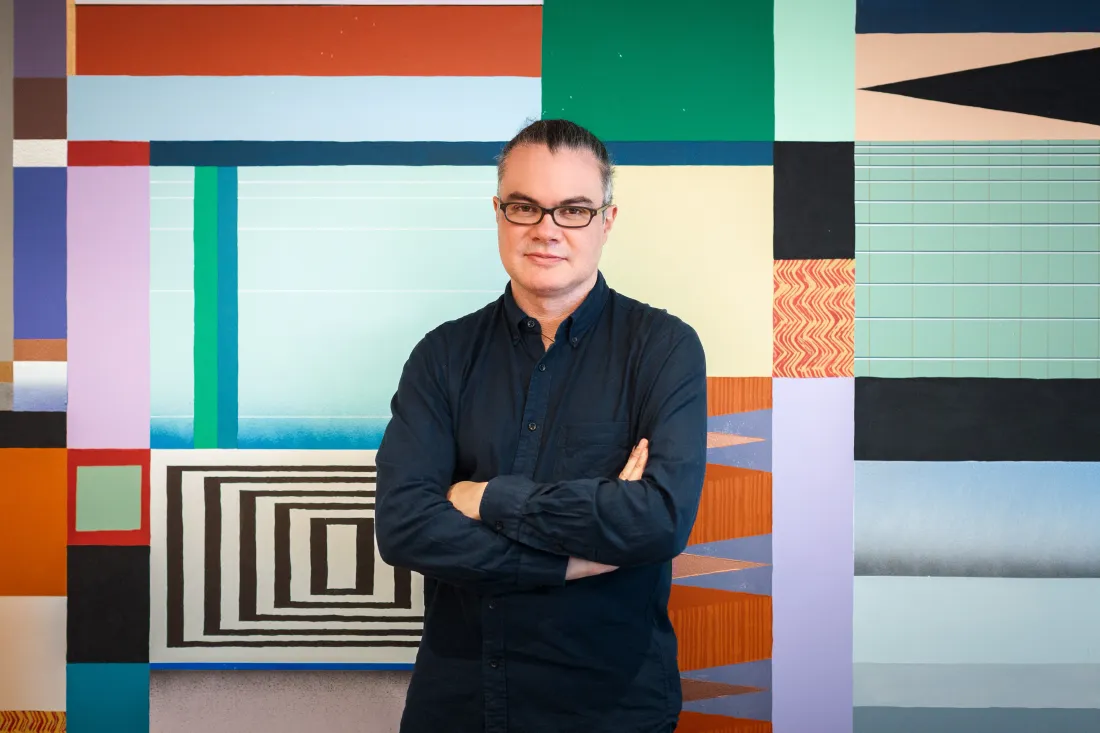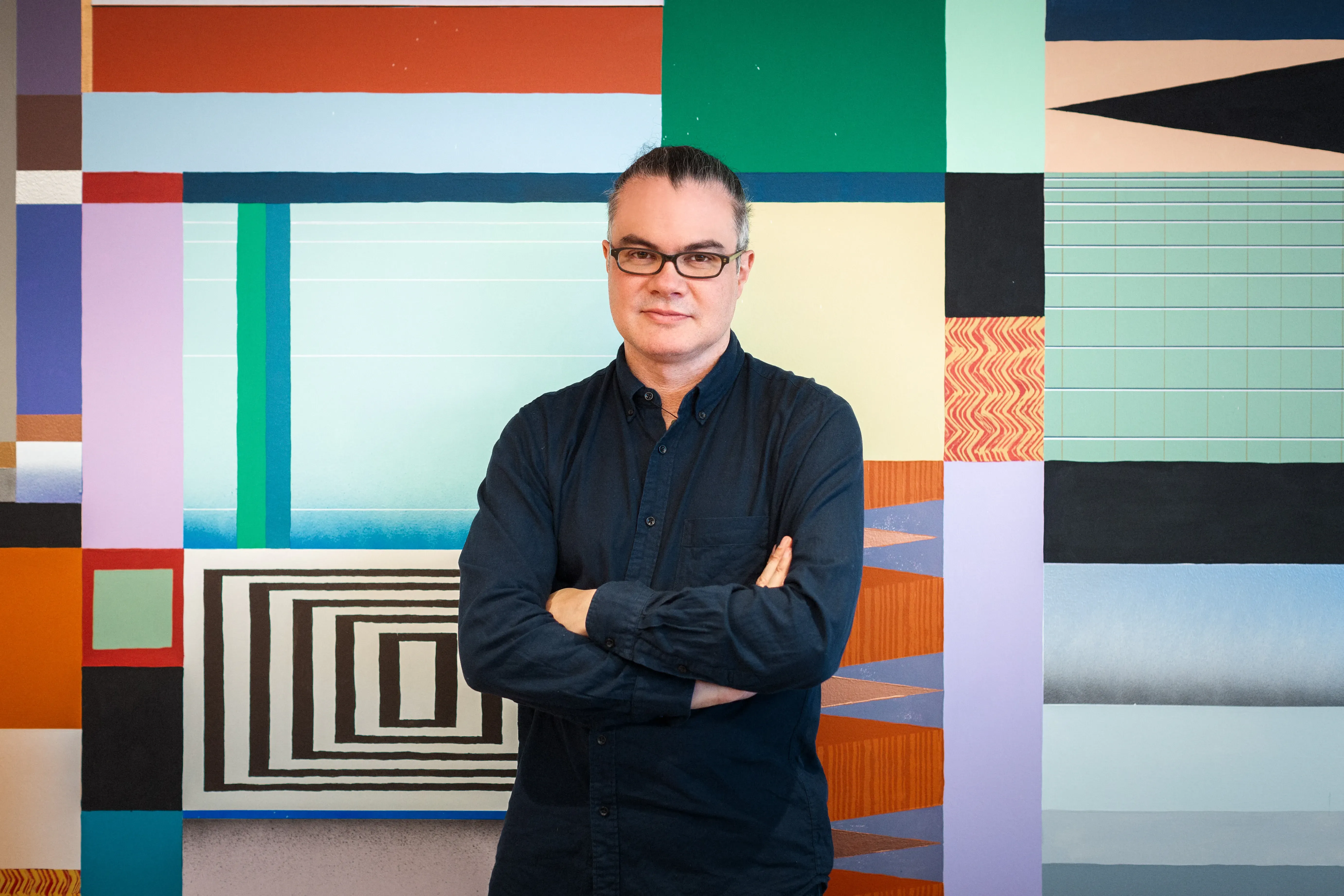Stepping up
Written by


Seb Chan describes his career as ‘happy accidents’ seizing opportunities and working with really smart people.
It’s taken him from Powerhouse Museum in Sydney, to Cooper Hewitt Smithsonian Design Museum in New York and now chief experience officer at Australian Centre for the Moving Image (ACMI) in Melbourne where they recently opened ACMI X studio for the creative industries.
In Wellington for the National Digital Forum, Seb tells us about holistic visitor-centric design strategy and how more than ever communities need places to convene, feel safe and be challenged by ideas, creativity and art.
“Museums need to step up their game in this regard – and as keepers of humanity’s communal past and with a unique ability to present the connections between the present and the past - we need to be a beacon and not retreat from a globally connected world.”
What aspect of your creative work gives you the biggest thrill?
Seeing things that I’ve been involved in making happen being used, played with, and experienced. I like to put an emphasis on ‘launching’ so that moment of people actually getting hands-on with what you’re made comes as early in the process as possible – then iterating and evolving in response to all the inevitable challenges that emerge.
What's your number one business tip for surviving (and thriving) in the creative sector?
Staying creative. Its really important to remember that you’re in the creative sector because of the ‘creative’ part – and its equally easy to lose sight of that and get caught in the treadmill of business operations and logistics that are no different to working in other sectors. And right now in these suddenly more uncertain times, its really important to watch your own mental health. Take care of yourself, and take care of those around you.
What’s your connection with NZ?
I was born in NZ and travelled on a NZ passport right up until 2011! My mum is from Wellington and my dad was a Chinese migrant to Auckland – so even though I grew up in Australia I’ve always had a relationship with NZ. I love the way NZ just gets on with things and manages to use its distance and smaller scale to its advantage and incubates some of the most interesting ideas.
Tell us a bit about your creative and digital background.
Happy accidents mostly. The usual “Generation X kid interested in computers and music discovers the Internet and WWW in 1994” story. After that it has been about seizing opportunities and working with really smart people – and timing. The work I was doing at the Powerhouse Museum around the early use of the social web and open access content in museums started small in 2005 and then grew from there to a point that by 2008 I was advising many different institutions around the world. I first spoke at NDF in 2006 about the work we were doing with ‘social tagging’. Since then I lived in New York for four years helping redesign and rebuild the Cooper Hewitt Design Museum for the Smithsonian.
Tell us about your role as Chief Experience Officer at the Australian Centre for the Moving Image.
I’ve just ticked over the first year in the role and we are collectively trying to negotiate the borders of the role. It really touches almost all the areas of the museum and in the last year I’ve been involved in such a wide range of things from wayfinding and building navigation to audio guides; exhibition design to getting video games back on a more equal footing with film inside the institution. At a strategic level I’ve also been helping the institution rethink what it is, who it is for, and what it does – which is the sort of work that Executive teams always need far more time to do. You’re going to see ACMI change a lot over the next 4 years and really seize the mantle of being the ‘National Museum of Film, TV, Video Games, Digital Culture and Art'.
What is holistic visitor-centric design strategy and why is it important?
A design strategy is about how we deliver the mission of the museum in a way that is coherent and legible to its visitors, collaborators and stakeholders. Design in museums used to be relgated to the marketing department or, if there was an internal team for exhibition design, share with them. A ‘holistic visitor-centric design strategy’ is about elevating above the operational needs of ‘visual design outputs’ and thinking about how visitors ‘use’ the museum from its galleries and café and shop, to its online and educational activities; undertaking user research and observation, and then designing better systems to deliver the needs of visitors in new, more impactful ways. Obviously these days, this means digital transformation but its also much broader than that – which is what keeps it exciting.
Tell us about ACMI X, studio for the creative industries.
ACMI X is the brainchild of our CEO, Katrina Sedgwick. Katrina wanted to develop closer ties between the museum and the industries that it exhibits and the opportunity of an office relocation provided the means to create a 60 seat co-working space inside the museum’s new offices. This means that we have a number of VR startups, artists, online video providers, editors, film makers, and interactive agencies embedded amongst the museum staff. This has already led to some great collaborations and commissions – Sandpit’s Ghosts, Toasts and the Things Unsaid is a unique VR piece that transformed an immersive theatre production into a VR experience in our galleries. We’ve also got postgrad students and researchers from RMIT and University of Melbourne working out of our space as well as a regular program of industry events and talks that now have a venue outside of the public museum space to happen in. Melbourne is quite the hotbed of creative technology in Australia at the moment and its an exciting time to bring producers and makers into the centre of the museum.
What are you talking about at the National Digital Forum?
I’m coming back to NDF after being away for six years and I’ll be talking with Dowse Art Museum Director Courtney Johnston about everything from innovation, change, leadership and ethics. Courtney knows me well and will we will be able to have a very frank and open discussion about the realities facing the cultural sector.
What are some of the current and future challenges and opportunities in your sector?
We’re in a terrible period of turmoil and uncertainty now. And more than ever our communities are going to need places to convene, feel safe, but also be challenged by ideas, creativity and art. Museums need to step up their game in this regard – and as keepers of humanity’s communal past and with a unique ability to present the connections between the present and the past - we need to be a beacon and not retreat from a globally connected world.
What’s your big idea for 2017?
I’m a little bereft of big new ideas in the wake of recent events. Small ideas, widely connected seem to be more sensible proposition right now. That and an ongoing commitment to social justice.
About Seb Chan
Seb Chan is the Chief Experience Officer (CXO) at ACMI (Australian Centre for the Moving Image) where he is responsible for creating and implementing a holistic, multi-channel, visitor-centred design strategy. Until August 2015, he was Director of Digital & Emerging Media, at Cooper Hewitt Smithsonian Design Museum in New York. There he led the museum’s digital renewal and its transformation into an interactive and playful new museum, which reopened after a three-year rebuilding and reimagining project. His team’s work won awards from the American Association of Museums, Museums and the Web, One Club and D&AD. Their work also featured in Slate, The Verge, and Fast Company. Seb introduced new thinking to the Smithsonian Design Museum in the area of acquiring digital media and software, notably acquiring the iOS App Planetary – the first App to enter the
Smithsonian’s collection.
Prior to relocating to New York, Seb was Head of Digital, Social & Emerging Technologies at the Powerhouse Museum in Sydney, where he led teams responsible for the Powerhouse’s pioneering work throughout the ’00s. This work encompassed open access, mass collaboration and digital engagement, as well as large scale Australian cross-agency projects. He has also worked as cultural sector consultant with organisations across the world and was the co-author of Culture24′s influential Lets Get Real action research project in 2011 and 2013, which helped evolve data-informed digital decision making in the UK performing arts and heritage sectors. Seb serves on several non-profit boards, and is a regular speaker at digital and cultural sector conferences and events. He has also led a parallel life in electronic art and music – organising and curating both festivals and international touring. He was also the founding editor-in-chief for a long running music magazine. In his spare time, Seb enjoys overly sweet dessert wines, and high grade chocolate.